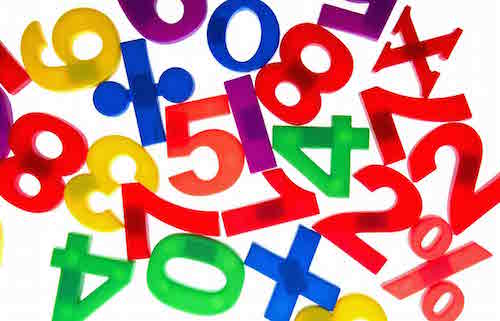What score do you need on the PSAT to qualify for National Merit distinction? The answer to this question depends on where you live. To achieve National Merit recognition, you need to match or exceed the cutoff score in your home state.
We’ve compiled the National Merit Semifinalist state cutoffs based on the most recent data from the fall of 2024. Before checking out the qualifying scores, let’s discuss how the National Merit Scholarship Corporation (NMSC) determines who is named Commended Student or Semifinalist.
How to Qualify for National Merit
National Merit is open to U.S. citizens who test in the U.S. in the fall of 11th grade. Only your junior year PSAT counts toward National Merit distinction and scholarships, though taking the PSAT as a sophomore or freshman can be good practice, especially if you’re aiming for top scores.
Students who achieve top scores may receive recognition from the National Merit Scholarship Corporation. NMSC compares your PSAT scores with those of other students in your state using its own Selection Index, which falls on a scale between 48 and 228.
The top 3-4% of scorers are named Commended Scholar. The top 1%, usually about 16,000 students, are named National Merit Semifinalists. Semifinalists may go on to apply for Finalist status and potentially win scholarship money.
As I mentioned above, NMSC uses its own Selection Index along with state percentiles. Let’s take a look at how your scores convert to this index.
Just how many different scoring scales are actually on the PSAT?
Understanding Your Scores on the PSAT
To understand your National Merit eligibility, you mainly need to pay attention to your PSAT section scores for Reading and Writing/Math. Each section is scored between 160-760.
NMSC multiplies your Reading and Writing score by 2, adds that number to your Math score, and then divides that total sum by 10. Let’s say you got a 700 on Reading and Writing and a 660 on Math. After doubling your R&W score (700 x 2 = 1,400), adding that sum to your Math score (1,400 + 660 = 2,060), and dividing that big number by 10 (2,060 / 10 = 198), you’d get your National Merit Selection Index Score: 206.
Based on our estimates for the qualifying PSAT scores, a score of 206 wouldn’t make it into the top 1%. Check out the cutoff scores below.

Does your PSAT score report look like a jumble of numbers? For National Merit, you just need to understand one: your Selection Index.
Predicted National Merit Scholarship Cutoffs
The cutoffs in the chart below apply to students who took the PSAT in October 2024. (In other words, these are the cutoffs for the Class of 2025).
Here's the full list of Selection Index scores that qualified for National Merit Semifinalist.
| State | Selection Index |
| Alabama | 213 |
| Alaska | 214 |
| Arizona | 218 |
| Arkansas | 213 |
| California | 221 |
| Colorado | 217 |
| Connecticut | 221 |
| Delaware | 220 |
| DC | 223 |
| Florida | 217 |
| Georgia | 218 |
| Hawaii | 217 |
| Idaho | 214 |
| Illinois | 220 |
| Indiana | 217 |
| Iowa | 214 |
| Kansas | 215 |
| Kentucky | 213 |
| Louisiana | 214 |
| Maine | 214 |
| Maryland | 222 |
| Massachusetts | 223 |
| Michigan | 218 |
| Minnesota | 217 |
| Mississippi | 212 |
| Missouri | 215 |
| Montana | 210 |
| Nebraska | 210 |
| Nevada | 212 |
| New Hampshire | 217 |
| New Jersey | 223 |
| New Mexico | 211 |
| New York | 220 |
| North Carolina | 217 |
| North Dakota | 209 |
| Ohio | 217 |
| Oklahoma | 211 |
| Oregon | 216 |
| Pennsylvania | 219 |
| Rhode Island | 217 |
| South Carolina | 213 |
| South Dakota | 209 |
| Tennessee | 217 |
| Texas | 220 |
| Utah | 211 |
| Vermont | 215 |
| Virginia | 221 |
| Washington | 220 |
| West Virginia | 209 |
| Wisconsin | 214 |
| Wyoming | 209 |
If you tested in Washington DC or Massachusetts, then the bar was especially high. You had to score at or above a 223. North Dakota, South Dakota, and West Virginia had the lowest cutoffs at 209.
If you haven't taken the PSAT yet and are aiming for National Merit, you should aim to get a Selection Index score 2-5 points higher than the cutoff score for your state. The reason you should aim a little higher is that qualifying scores can fluctuate a little from year to year.
Based on these cutoffs, how can you figure out what section scores you need on the PSAT to qualify for National Merit?
Let's talk goals.
What Should You Score on Each PSAT Section?
As discussed above, NMSC's Selection Index multiplies your Reading and Writing score by 2, adds that to your Math score, and then divides that entire sum by 10. This means that the Reading and Writing section score is worth double what your Math score is worth when calculating your Selection Index Score. So, how you perform on the Reading and Writing section will heavily impact the score you need for Math.
In order to figure out what you need for each section, use these steps:
First, take your state’s qualifying score and multiply it by 10. Then, divide that number by 3. This will give you a general idea of the score you need on each section to meet your state’s qualifying score.
Here’s an example using New York’s 2023 state qualifying score:
220 x 10 = 2200
2200 / 3 = 733
In this example, you’d need to get at least 733 for both sections to earn New York’s state qualifying score. Of course, scoring a little lower or higher on either section could still get you there.
If you're much stronger in math than you are in writing, then you could aim for a perfect 760 on Math and a little lower on Reading and Writing. Overall, you need to get a section score above 715 on both sections of the PSAT to compete for National Merit, with some states requiring even higher section scores. Again, aim for a few points higher than the minimum, as cutoffs can vary somewhat from year to year.
If your goal is to be named National Merit Semifinalist, then you'll want to put in some effort toward prepping for the PSAT. Below you'll find links to useful resources, such as official PSAT practice tests and sample questions.
You'll need to crack the books to get a purrfect score.
How to Prep for the PSAT
The best way to prepare for the PSAT is to familiarize yourself with official practice questions and self-timed PSAT practice tests. Score your attempts, figure out your strengths and weaknesses, and design a study plan that targets your weak areas.
Depending on where you’re starting out, you might want to put in 40 hours of prep or more. You should familiarize yourself with the test content to review key concepts and get used to the tricky wording of the PSAT/NMSQT. At the same time, you can try out different strategies for answering questions efficiently, like recognizing answer types and using the process of elimination.
One essential part of studying is reviewing and analyzing your mistakes. Rather than taking a practice test and moving right on to the next, you should take the time to deconstruct your errors piece by piece. Did you misunderstand the question, lack content knowledge, or make a careless mistake? By understanding the root of your mistake, you can figure out what you need to fix for next time.
All of your prep might not only pay off with National Merit distinction and scholarships, but it should also help you achieve excellent scores on the SAT!
What’s Next?
If you achieve amazing PSAT scores and are named Semifinalist, how do you go on to win the scholarship? This guide talks about the application process for moving from National Merit Semifinalist to National Merit Finalist and scholarship winner.
If you're scoring highly on the PSAT, then you might be in a good position to get a perfect score on the SAT. FYI, you don't have to be a genius to get a 1600 — full scores are all about how much and how well you prep! Check out this guide to getting a perfect score on the SAT, written by a perfect scorer.
If you're struggling with the PSAT and SAT, you might consider trying the ACT instead. This guide covers the differences between the SAT and ACT, so you can choose the test that's best for you.

















